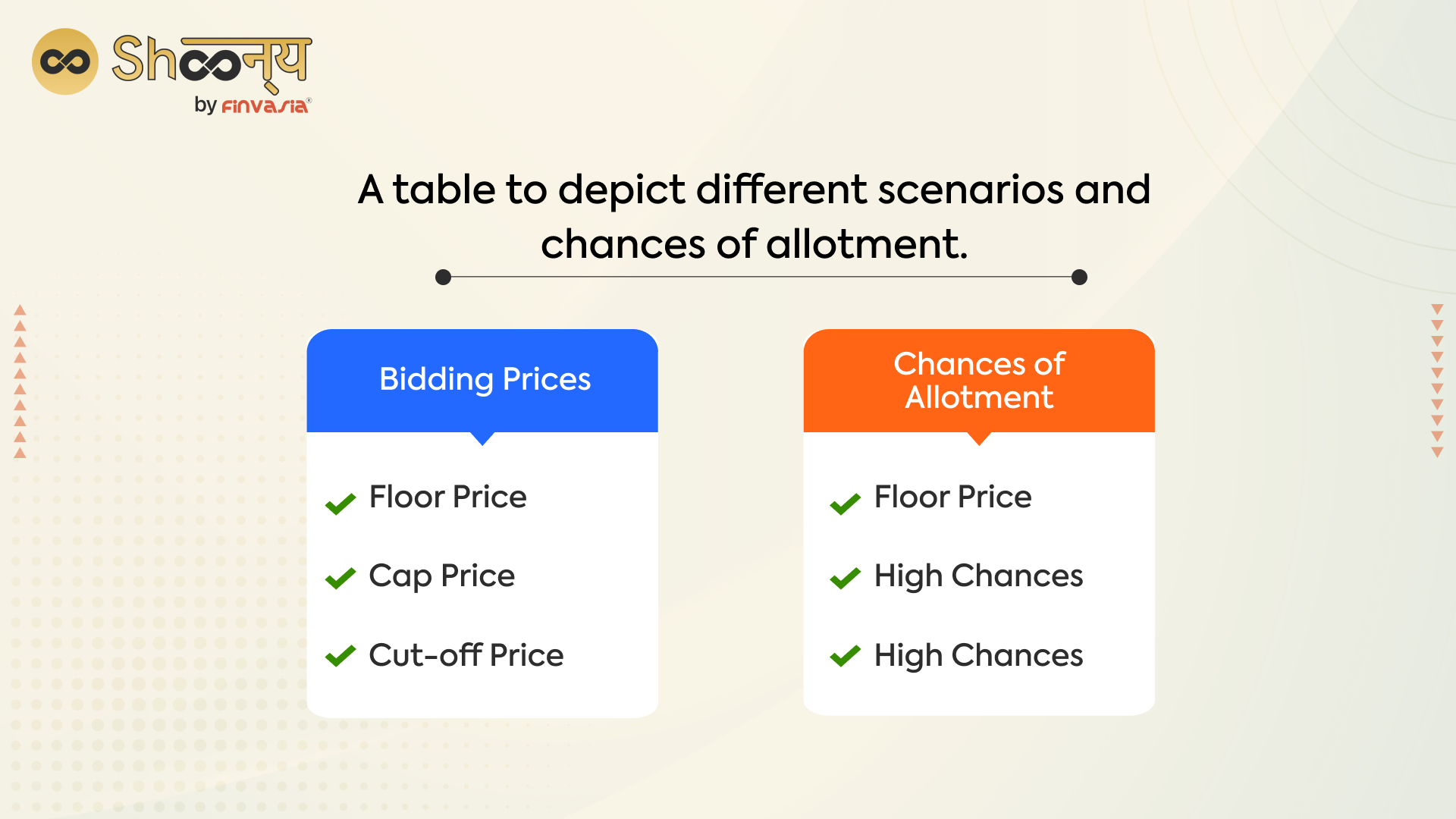An Initial Public Offering (IPO) is a crucial event for a company as it opens the door for public investment and helps raise capital for growth and expansion. As a potential investor, you may find yourself in a dilemma while bidding for shares in an IPO, as the right bidding price can make all the difference. In this blog, we will take a closer look at the key concepts of the price band, bidding price, cut-off price and the impact of bidding at various price points in an IPO.
Price Band and Bidding Price
A price band is a range of pricing set by the issuing company, defining the upper and lower limits of share pricing in an IPO. The lower limit represents the floor price, while the upper limit represents the cap price. The floor price serves as the minimum price for shares, while the cap price represents the maximum.
The bidding price is the price at which an investor places a bid for shares in the IPO. For example, if a company sets a price band of Rs. 700-1000, an investor can bid for shares within this range, from Rs. 700 to Rs. 1000. If the investor bids for shares at Rs. 780, this becomes the bidding price. If the cut-off price is above Rs. 780, the investor will not receive any shares, but if the cut-off price is below Rs. 780, the investor may receive shares.

Cut-off Price
The cut-off price is the final share price determined by the company following the conclusion of the bidding process. It lies in the middle of the pricing range and is decided based on all IPO applications and the prices proposed by the bidders. If the IPO performs well, the cut-off price is often close to the cap price.
Different Scenarios and Effects Bidding at various price points in an IPO can result in different outcomes for the investor.
Bidding near the Floor Price
Bidding near the floor price reduces the chances of receiving shares, but it may be the best option for investors who are on a budget and can only invest up to a certain amount.
Bidding at the Cap Price
Bidding at the cap price increases the chances of receiving shares in the allotment, as it gives the investor an upper hand.
Bidding at the Cut-off Price
Bidding at the cut-off price is considered the best option for an IPO, as it means that the investor accepts whatever the final price of the IPO shares will be. This also gives the investor an upper hand in the bidding process.
Conclusion
Bidding in an IPO requires careful consideration, and investors should always choose either the cut-off price or the cap price while bidding for shares. Bidding near the floor price should only be considered if the investor is on a budget and can only invest up to a certain amount.
To stay updated on upcoming IPOs and their price bands, investors can use the Shoonya app, a zero-brokerage trading platform that provides real-time information on the stock market. With its user-friendly interface, investors can easily track IPO offerings and make informed investment decisions.

